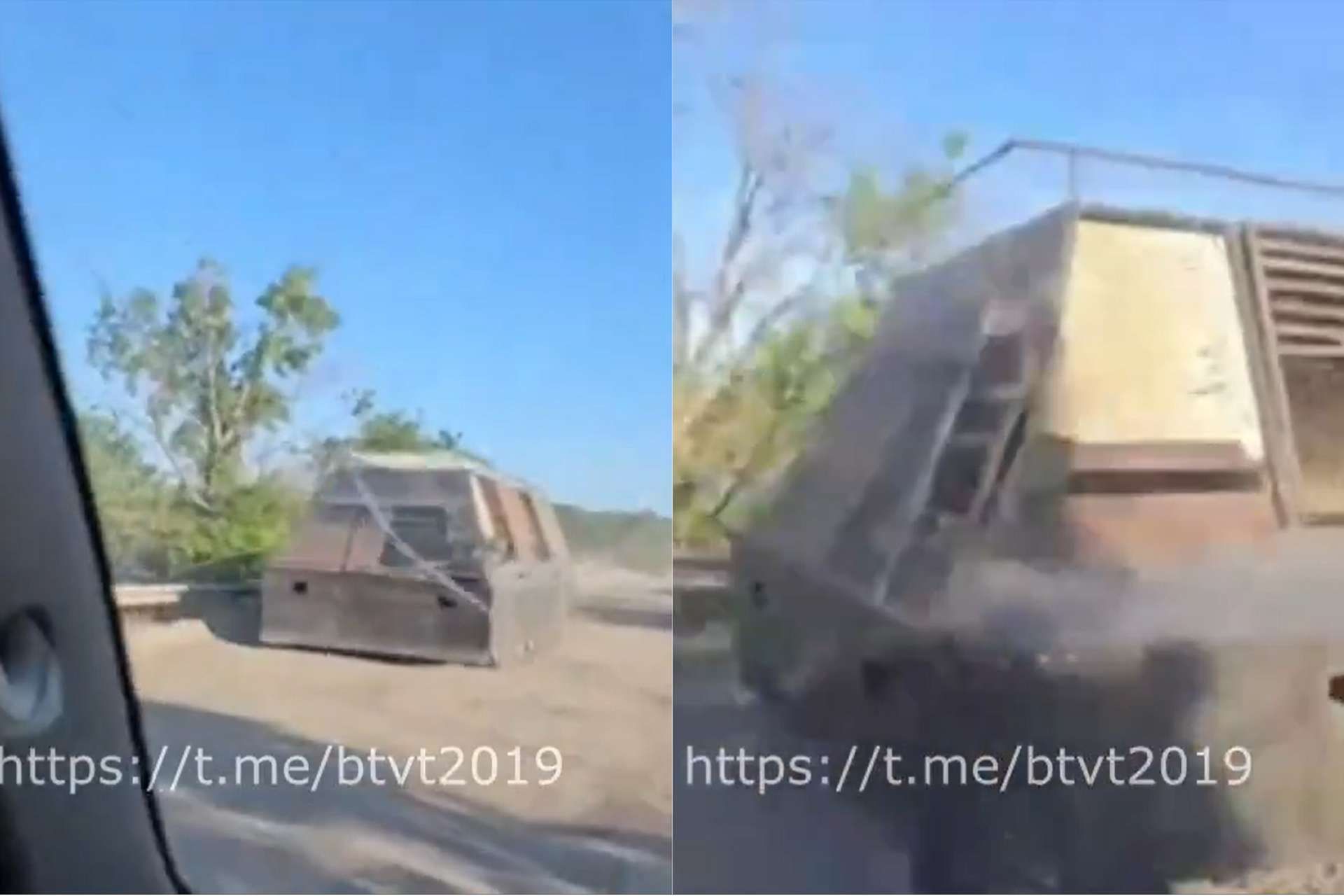Breaking news
After Turtle Tank Russia Invents and Deploys Turtle MT-LB in Ukraine.
On May 6, 2024, a new armored vehicle modification was spotted on social media, the "Turtle MT-LB." This innovation follows the same principles as the previously introduced "Turtle Tank", but instead of using a tank chassis, the modification has been applied to the MT-LB, a versatile tracked armored vehicle.
Follow Army Recognition on Google News at this link

The Turtle MT-LB, like its tank counterpart, aims to survive the battlefield by resisting drone attacks. (Picture source: Open Source Information)
Following the Turtle Tank, we now have a new member of the turtle family, the "Turtle MT-LB." However, unlike the Tank, this version is somewhat less extravagant, as we will see in this article.
Firstly, what is a Turtle Tank and more broadly, what does it mean to "turtelize" a vehicle? The "Turtle Tank" refers to Russian tanks, often T-72 models, modified with additional armor resembling a turtle shell, hence the name. These modifications include the installation of super cage armor made of sheet metal and steel, designed to protect the vehicle against various threats, particularly drone attacks. This armor offers increased protection but significantly reduces the tank's mobility and turret functionality.
In this latest adaptation, Russian forces have applied similar protective measures to the MT-LB, a versatile tracked vehicle traditionally used for transporting troops and equipment. The MT-LB has been covered with sheet metal and steel to create makeshift armored plating, aimed at providing increased defense against drone strikes. While offering additional protection, this modification also limits the vehicle's operational capabilities, including visibility and mobility. However, the loss of capabilities in the MT-LB is less severe than that of the T-72. But before discussing the loss of capabilities, let's talk about the capabilities of a standard MT-LB.
The MT-LB is a tracked armored vehicle initially designed by Russia. Weighing 11,900 kg, many countries use this vehicle; it has been a best-seller and is one of the most widely distributed vehicles worldwide. It is normally equipped with a PKT 7.62 mm machine gun or a 12.7 mm machine gun as its primary armament, offering steel protection of 3 to 10 mm against small arms fire and shell splinters.
The MT-LB can reach a speed of 62 km/h and has a range of 500 km. It is also equipped with an NBC (nuclear, biological, and chemical) protection system, night vision equipment, and a white searchlight, enhancing its capability to operate in varied and dangerous environments. With a length of 6.45 meters, a width of 2.86 meters, and a height of 1.86 meters, it is designed to carry a crew of two and eleven additional passengers.
The Turtle MT-LB, like its tank counterpart, aims to survive the battlefield by resisting drone attacks. However, these modifications have elicited mixed reactions. While the additional armor can potentially protect the vehicle against immediate drone threats, it also makes it more cumbersome and less capable in dynamic combat situations. Moreover, the effectiveness of these modifications in real combat scenarios remains to be examined, as the compromises in maneuverability and visibility could be detrimental during intense engagements.
But the main criticism that could be made about the Turtle Tank does not apply here, as the main problem is that the Turtle Tank loses its primary role as a Main Battle Tank in favor of that of an APC (Armored Personnel Carrier) or even a self-propelled howitzer. This criticism does not apply to the Turtle MT-LB, which does not lose its primary function as an APC. Certainly, several functionalities are altered by this modification, such as its mobility or firepower, but its role as a troop carrier is still fulfilled.
The deployment of the Turtle MT-LB in Ukraine is partly due to Russia's efforts to adapt to the growing threat of Ukrainian drones. Ukrainian forces have effectively used drones to target Russian armored vehicles, prompting these unconventional defensive measures, with a certain paranoia seemingly having reached Russian soldiers, leading to makeshift and artisanal "turtelizations". Despite the additional protection, these modifications come with many compromises.




























